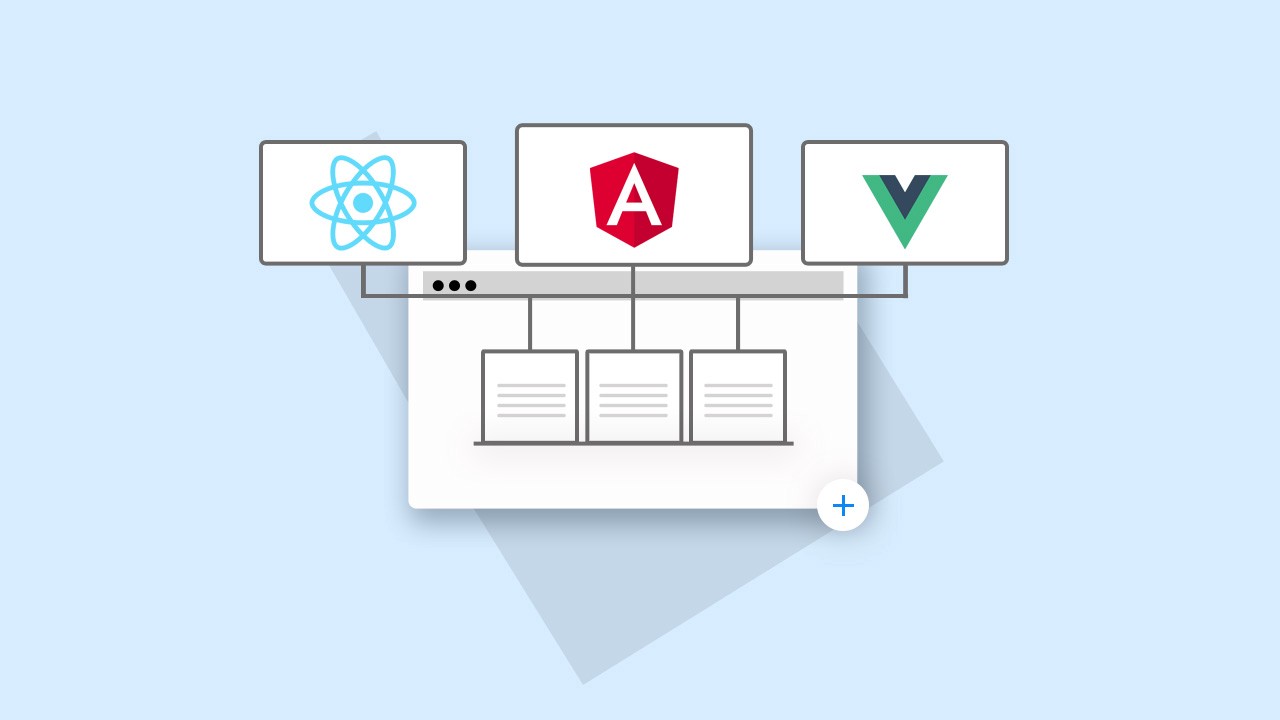
A micro frontend is a software development technique that allows for the creation of small, independent frontend applications that can be composed together to form a complete frontend application.
This approach can help to improve the modularity and maintainability of large frontend applications.
Micro frontends are becoming increasingly popular as a way to manage the complexity of large frontend applications.
Table of Contents
Why implement a micro frontend?
Applying a micro frontend design allows developers to build more interactive, more manageable and more scalable frontends.
Specifically, micro frontends are better suited for large frontend projects. Instead of working with the entire frontend architecture for changes or updates, micro frontends allow developers to target precisely what they want to change without even “touching” the other parts of the architecture.
This is why companies such as Fiverr, IKEA, Microsoft, Starbucks, etc., are increasingly relying on micro frontends for their applications.
Types of Micro Frontends
#1 Module Federation
Module Federation is a JavaScript architecture that allows two different codebases to share code and dependencies. The architecture is specifically used on micro frontends.
(Micro frontends split an entire frontend of an app into smaller, more manageable pieces that work together.)
Module Federation architecture makes developing micro frontends more efficient because it can dynamically share necessary code between micro frontends. Which removes the need for code duplication or external custom library management.
#2 Single SPA
Single SPA is a JavaScript micro frontend framework that allows for the loading of multiple micro frontends in one page.
Single SPA has two major benefits:
1) It’s easier to adopt
There is no need to change your build tools or development workflows.
You can use Single SPA with any frontend framework, and you can continue to use the same bundler and development server that you are using today.
2) It’s easier to make micro frontends
With Single SPA, there is no need to change your code or build process to start loading micro frontends.
You can configure Single SPA to load micro frontends that are deployed anywhere.
#3 Angular Elements
Angular Elements is a project that lets you use Angular components outside of an Angular application.
Angular Elements are custom HTML elements that represent Angular components. They are self-bootstrapping, which means they can be loaded into any web page without the need for an Angular app.
#4 Auth0 Extend
Auth0 Extend is a micro frontend platform that makes it easy to build, deploy and manage micro frontends.
With Auth0 Extend, you can easily compose micro frontends into a complete frontend application.
Auth0 Extend provides a set of tools to help you build micro frontends, including a command line interface (CLI), a micro frontend library, and a micro frontend boilerplate.
Why should you use micro frontends?
There are many benefits to using micro frontends, including:
Increased modularity
Micro frontends are small and independent, which makes them more modular than monolithic frontends.
This increased modularity can lead to improved maintainability and easier debugging.
Improved team collaboration
Micro frontends can be developed by small teams, which can improve communication and collaboration among team members.
Micro frontends also allow for a more Agile development process, as changes can be made to one micro frontend without impacting the other micro frontends.
Easier scaling
Scaling a micro frontend is easier than scaling a monolithic frontend.
This is because each micro frontend can be scaled independently, and changes to one micro frontend will not impact the other micro frontends.
Improved user experience
Micro frontends can improve the user experience by allowing for more flexibility and customization.
For example, micro frontends can be used to create different user experiences for different user groups.
What are the challenges of micro frontends?
There are a few challenges to using micro frontends, including:
Increased complexity
Micro frontends can add complexity to an application due to the need to manage multiple codebases and dependencies.
Increased development time
Developing micro frontends can take longer than developing a monolithic frontend, as each micro frontend needs to be developed separately.
Deployment challenges
Micro frontends can be difficult to deploy, as they need to be deployed to multiple environments.
Testing challenges
Micro frontends can be difficult to test, as each micro frontend needs to be tested separately.
Micro frontends are a great way to improve the modularity, team collaboration, and user experience of your frontend applications.
However, micro frontends can also add complexity to your application and increase development time.
If you decide to use micro frontends, make sure you have the resources and expertise necessary to manage them effectively.
How do micro frontends work?
Micro frontends are small and independent frontend components that can be composed into a complete frontend application.
Each micro frontend is developed separately and has its own codebase, build process and deployment.
Micro frontends can be developed with any frontend framework, and they can be deployed anywhere.
To load micro frontends into a web page, you can use a micro frontend library or micro frontend boilerplate.
Simple micro frontend implementation

Micro frontends – FAQs
What is a micro frontend?
A micro frontend is a small and independent frontend component that can be composed into a complete frontend application.
Each micro frontend is developed separately and has its own codebase, build process, and deployment.
What are the benefits of micro frontends?
There are many benefits to using micro frontends, including increased modularity, improved team collaboration, easier scaling, and improved user experience.
What are the challenges of micro frontends?
There are a few challenges to using micro frontends, including increased complexity, increased development time, deployment challenges, and testing challenges.
How do micro frontends work?
Micro frontends are small and independent frontend components that can be composed into a complete frontend application.
Each micro frontend is developed separately and has its own codebase, build process, and deployment.
To load micro frontends into a web page, you can use a micro frontend library or micro frontend boilerplate.
Micro-Frontends in Just 10 Minutes
Summary – Micro Frontend
Micro frontends are small and independent frontend components that can be composed into a complete frontend application.
Micro frontends offer many benefits, including increased modularity, improved team collaboration, easier scaling and improved user experience.
However, micro frontends can also add complexity to your application and increase development time.
If you decide to use micro frontends, make sure you have the resources and expertise necessary to manage them effectively.


![Backwards 3: How to Type "Ɛ" [EASY]](https://softwareblade.com/wp-content/uploads/2022/02/Screen-Shot-2022-02-19-at-9.03.25-PM-150x150.png)